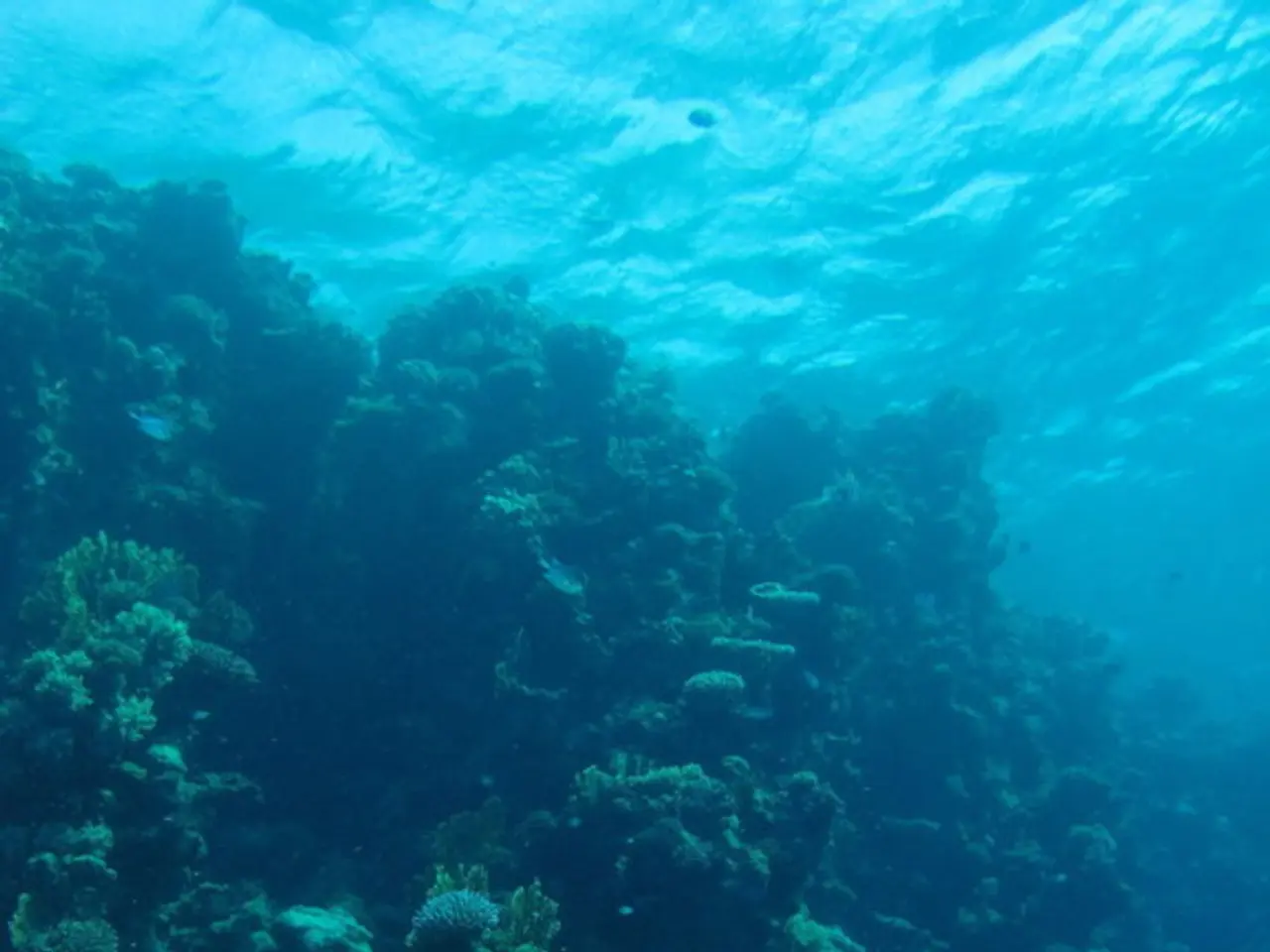Redefining Oceanic Funding Strategies
=====================================================================================
In a significant stride towards preserving the health of our oceans, the Asian Development Bank has launched the Blue SEA Finance Hub. The initiative aims to help Southeast Asian economies structure blue-economy investments, addressing a long-standing issue of limited scalability in sustainable ocean projects and a paucity of investment offerings [1].
The launch of the Blue SEA Finance Hub is just one of many efforts being made to improve and scale up "blue finance," a crucial step in supporting ocean health. The Ocean Panel, comprising 18 leaders of maritime states, estimates that less than 1% of the ocean's value has been invested in sustainable projects over the last ten years [2].
To address this gap, current strategies focus on innovative financial instruments such as blended finance, loan guarantees, biodiversity credits, and project aggregation. These approaches aim to de-risk investments and attract private capital, mobilizing public, multilateral, and philanthropic capital for ocean-positive ventures [1].
One example of success in this area is the Nautilus Blue Guarantee Company, launched to unlock private capital for investments in six key blue-economy sectors. Similarly, the Korean Ocean Business Corporation successfully issued a US$300 million blue-bond in April [1].
Another critical element is the development of standardized frameworks and protocols, such as the "Ocean Investment Protocol 2025." This practical roadmap for financial institutions helps manage ocean-related risks and unlock investment opportunities that support SDG 14, "Life Below Water" [2].
Progress has been made in implementing these strategies. For instance, the SWEN Blue Ocean 2 fund, which had mobilized over €300 million by mid-2025, mostly from institutional investors, backs startups addressing overfishing, pollution, and climate resilience in marine environments [3].
However, challenges persist, including the limited scalability of some projects, scarcity of data, and the relative novelty of marine investment frameworks. Despite these challenges, ocean finance is increasingly seen as both a moral imperative and a strategic financial opportunity [1][2][3][4][5].
The ocean plays a critical role in the global economy, with trade in ocean goods and services reaching US$900 billion and US$1.3 trillion in 2023, respectively. The marine biotechnology market is projected to reach US$6.4 billion by 2025 [5]. Furthermore, the ocean absorbs around 25% of human-caused carbon dioxide emissions [4].
As we move forward, it is essential to continue innovation in ocean financing methods, improve data, and institutionalize investable models. The importance of a sound investment thesis and collaboration between private- and public-sector bodies in ocean financing cannot be overstated. With the UN High Seas Treaty ratified by 50 countries by the end of the United Nations Ocean Conference in June 2021, there is growing international cooperation in this vital endeavour [1].
References:
- The Blue Economy: Opportunities and Challenges
- Ocean Investment Protocol 2025
- SWEN Blue Ocean 2
- The State of the World's Oceans
- Deutsche Bank Emphasizes Need for Continued Innovation in Ocean Financing
- The Blue SEA Finance Hub, launched by the Asian Development Bank, is addressing the scarcity of investment offerings in sustainable ocean projects, a key issue in improving "blue finance" and supporting SDG 14, "Life Below Water".
- Innovative financial instruments like blended finance, loan guarantees, biodiversity credits, and project aggregation are being utilized to de-risk investments, mobilize capital, and promote ocean-positive ventures.
- The development of standardized frameworks and protocols, such as the "Ocean Investment Protocol 2025," helps financial institutions manage ocean-related risks and unlock investment opportunities.
- The marine biotechnology market is projected to reach US$6.4 billion by 2025, while the ocean absorbs around 25% of human-caused carbon dioxide emissions, highlighting the strategic financial opportunity as well as the moral imperative in ocean finance.
- With the UN High Seas Treaty ratified by 50 countries and growing international cooperation, it is crucial to continue innovation in ocean financing methods, improve data, and institutionalize investable models for a sustainable blue economy.




